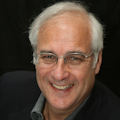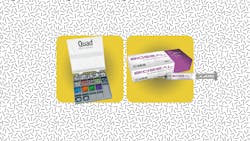I have it—you need it! Quad Sectional Matrix System and BioSeal
Quad Sectional Matrix System
In my 50 years of practicing restorative dentistry, I’ve seen many matrix systems come and go. Early in my career—starting in dental school—I used the classic Tofflemire-type retainer system for alloy restorations. Application was relatively straightforward, and it provided adequate contact for restoring Class II decay. Of course, optimal contact was achieved by wedging to open the contact, placing the matrix, and then burnishing the contact area. A tight seal was also supported by the alloy itself, which slightly expanded during placement and then fully hardened.
Roughly 53 years ago, I transitioned to using all-resin restorations, and with that shift came a new challenge: achieving tight, consistent contact. Composite resin, unlike alloy, inherently shrinks when cured. That made the traditional stainless-steel matrix and Tofflemire-type systems far less viable.
Over the decades, I’ve observed and personally tested the evolution of numerous matrix systems designed to improve contact in resin-based restorations. Some relied on clear Mylar matrices, which could be used with a Tofflemire holder or as a single, integrated piece. Eventually, ring-based systems emerged, offering better outcomes. I’ve tried many of them, but Garrison consistently provided the best option in terms of ease of use and reliability. Their system offered not only rings, but also wedges, matrices, and instruments that streamlined the entire process.
Fast-forward to 2025, and Garrison’s Quad Sectional Matrix System has taken things even further. It’s now equipped to handle complex restorative scenarios, including adjacent Class II cavities and deeper subgingival lesions. When working with adjacent Class IIs, I’ve found that two matrix bands, one quad ring, and one quad wedge create an efficient and predictable setup. For deeper lesions, Garrison offers a subgingival firm band that pairs with the quad wedge and quad ring to ensure a secure seal between band and tooth.
The quad ring also features a unique driver tip that applies consistent, gentle pressure for a tight, effective seal. And when dealing with complex restorations involving multiple teeth, the universal (blue) ring and tall (orange) ring can be used together for added flexibility.
For any clinician seeking precision, efficiency, and predictable contact in restorative dentistry, this is a must-have product.
BioSeal Bioceramic Endodontic Sealer
Essential Dental Systems was founded by, and remains under the ownership of, two renowned endodontists responsible for developing some of the finest products and techniques in the field—tools that have significantly enhanced our ability to save teeth through endodontic therapy. BioSeal is one such advancement.
In recent years, we have witnessed the rapid rise of biomimetics, biomimicry, and bioactive products in restorative dentistry. These approaches aim to replicate the natural structure and function of teeth—helping us treat patients in a way that not only restores but also reinforces. Until recently, these innovations were largely seen in restorative applications. Now, we finally have a bioactive sealer designed to support the long-term success of endodontically treated teeth.
BioSeal is uniquely formulated to remineralize tooth structure through a combination of calcium silicate, calcium phosphate, and bioactive glass, chlorhexidine, and biomimetic polymers. This combination provides an ideal environment for restoring lost mineral content while actively reinforcing the internal structure of the tooth. It strengthens dentin and offers ongoing antimicrobial protection, thanks in part to the slow release of chlorhexidine over time.
Its hydrophilic nature allows it to flow predictably—even into the most tortuous canal anatomy—while its high pH (12) creates an environment highly unfavorable to bacterial survival. BioSeal is also radiopaque, and its production of hydroxyapatite enables integration with dentin at the microscopic level.
Clinicians will appreciate its versatility—it’s compatible with both warm and room-temperature vertical obturation techniques, and if retreatment is ever necessary, removal is as straightforward as with gutta-percha alone.
In short, BioSeal is a modern, biologically active sealer that supports the long-term health and function of teeth following endodontic therapy. It exemplifies the kind of thoughtful innovation we’ve come to expect from Essential Dental Systems—and one more reason why bioactive materials continue to gain traction in endodontics today.
Editor's note: This article appeared in the June 2025 print edition of Dental Economics magazine. Dentists in North America are eligible for a complimentary print subscription. Sign up here.
About the Author

Howard S. Glazer, DDS, FAGD
Howard S. Glazer, DDS, FAGD, is a fellow of the Academy of General Dentistry, American College of Dentists, International College of Dentists, American Society for Dental Aesthetics, American Academy of Forensic Sciences, and a diplomate of the American Board of Aesthetic Dentistry. He is an attending dentist at the Englewood Hospital in Englewood, New Jersey, and the deputy chief forensic dental consultant to the Office of Chief Medical Examiner, City of New York.
